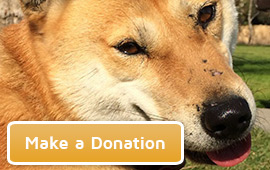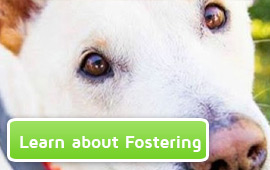Teaching your dog to stay
(From The Dumb Friends League)
Definition:
Teaching Your Dog to “Stay”
“Stay where you are until I return and release you.”
Practical uses:
Stays are useful when you need your dog to be still while you do something else. They can also help to teach your dog self-control and independence.
How to teach:
Start in a quiet place with few or no distractions. “Stay” begins as an extended sit (see “Teaching Your Dog to ‘Sit'”). Stand directly in front of your dog and give the sit cue; gradually increase the time before you click and treat (C/T). Throw the treat so that the dog must get up to retrieve it. Do not step away from your dog — stay within a foot of your dog until he can remain in the stay position for at least 30 seconds at least nine out of ten times that you ask him to.
Adding the cue and moving on:
Begin using the cue word “stay” right after you say “sit.” Take one step away from the dog (remain facing him) and after two seconds step back to your original position and C/T (always throw the treat so that the click also acts as a “release,” giving permission to the dog to get up out of the stay). Again gradually increase the time before you C/T to 30 seconds, never moving more than one step from your dog. You should also begin using a release word, like “okay” or “free” as you throw the treat.
If the dog breaks his stay, gently return him to the original spot, then C/T for a shorter stay (i.e, if he broke at ten seconds, be sure to C/T at six or seven seconds this time). Make sure he “succeeds” (doesn’t break his stay) at least five more times before you begin increasing the time again. The idea is to have lots of successful stays that can be rewarded and few breaks, which are not rewarded.
Tips:
- · When your dog has learned to stay with you close by, you can gradually begin to increase the distance you move away from him; but when you increase distance, decrease time! For example, you might gradually increase the length of the stay to 30 seconds when you are one step away. Then take two steps away, but C/T after five seconds, and gradually build to 30 seconds before increasing the distance again. Take it slow!
- · Always return to the dog to C/T or release from the stay. DO NOT call your dog to you out of a “stay” as this teaches him that breaking the stay gets rewarded.
- · Progress to moving around a bit (not always directly in front of the dog) while the dog is staying and then returning to stand beside the dog for varying lengths of time before you C/T him.
- · Work on longer duration stays (up to three minutes) of short distances.
- · Variable Schedule of Reinforcement – for shorter duration/distance stays that the dog is doing reliably, start a variable schedule of reinforcement. As you increase time and or distance, C/T on a continuous schedule for the more difficult behaviors.
- · When on a continuous schedule of reinforcement, the click is the release. Once you go to a variable reinforcement you will need to use your release cue to let the dog know when he may get up out of the stay position. Remember to always return to the dog before you release him.
- · Once your dog is performing the behavior reliably on cue to your satisfaction (i.e., he will stay for two minutes at a distance of 20 feet, or whatever criteria you set, at least 90% of the time) on a variable schedule of reinforcement, you don’t really need the clicker any more for this behavior. You should still reward your dog often and variably with praise and/or a food treat, but you don’t need the clicker any more — until you’re ready to teach a new behavior!
Adding Distractions:
- · Once your dog is performing the stay at the time and distance you require, you can start to add distractions. While the dog is on a stay, bounce a ball, ring the doorbell, or have someone run by. When you first add distractions, be sure to make the other elements of the stay — time and distance –easier; for example, stand very close to the dog and C/T immediately after the distraction if the dog holds the stay.
- · If you have been training in a quiet location with few distractions, start practicing in locations with more distractions. If possible, increase the environmental distractions gradually. So if you have been training in your living room, move to the back yard, then the front yard, then a quiet park, then a busier park. And as always, make it easier for the dog to succeed (shorten time and distance criteria) when the environmental distractions are more difficult.
� 2010 Dumb Friends League. All Rights Reserved.



